The journey to Ha Giang in May begins with winding roads still damp from the night rain, and the cool sensation that touches your fingertips as your vehicle rounds mountain slopes shrouded in early morning mist. In the distance, terraced fields filled with water gradually appear, reflecting the sky like mirrors spread across the mountainsides. The mountain passes are lush with new growth after the first rains, while West Con Linh Mountain silently embraces a sea of clouds at eye level.
If you’re planning this trip, join Phieu Travel as we explore the unmissable experiences awaiting you in Ha Giang this May!
1. Ha Giang Weather in May
In May, while the lowlands start becoming muggy, Ha Giang enjoys its own uniquely pleasant climate. Temperatures hover around 24-27°C (75-81°F), with crisp air and comfortably warm sunshine. On higher elevations like Dong Van or Lung Cu, mornings and evenings retain a familiar coolness, sometimes dropping to just 15-18°C (59-64°F).
Visiting Ha Giang in May feels like experiencing all four seasons in a single day. You’ll wake up to thin morning fog, as if in springtime. By noon, the sky turns brilliantly blue with crystal-clear air reminiscent of summer. In the afternoon, clouds gather at eye level, softening the landscape like autumn’s arrival. And at night, the cold seeps through every breeze, making you want to burrow into warm blankets.
Occasionally, early seasonal rains arrive unexpectedly, coming and going quickly. They leave behind the rich scent of mountain soil and droplets clinging to leaves. These showers make the scenery even more vibrant and fresh, making your May exploration of Ha Giang even more memorable.

The Best Time to Visit Ha Giang: A Seasonal Guide to Flowers & Festivals
2. How to Get to Ha Giang in May
For those planning a May trip to Ha Giang, Hanoi remains the most convenient starting point. From here, you can choose to travel by bus, self-drive car, or motorcycle to Ha Giang, covering a distance of 300km. For visitors from Central or Southern Vietnam, the most practical option is flying to Hanoi first, then continuing by land.
2.1 Traveling to Ha Giang by Bus
Bus travel is a popular choice thanks to reasonable costs and flexible schedules. You can choose between sleeper buses or limousines, with travel time around 7 hours and ticket prices ranging from 250,000 to 350,000 VND per person. Larger groups (7-8 people) often charter entire limousines for 2,800,000-3,500,000 VND to have more control over their schedule.
However, the quality of standard bus services varies, sometimes resulting in overcrowding or cramped spaces. For greater comfort, consider Phieu Travel’s round-trip Hanoi-Ha Giang service. Depending on your needs, you can choose from regular sleeper buses, private cabins resembling “mobile hotels” or “mobile palaces,” to premium limousines. Ticket prices range from 250,000 to 550,000 VND per way.
2.2 Traveling by Self-Drive Vehicles (Car, Motorcycle)
If you crave freedom, traveling by self-drive car or motorcycle offers an exciting experience. The most common route follows National Highway 2 through Tuyen Quang, then connects to National Highway 4C up to Ha Giang City. As you approach your destination, mountain passes increase with consecutive hairpin turns, requiring steady driving skills and mountain road experience. Before departing, don’t forget to thoroughly check your fuel, brakes, and tires to ensure safety.
After reaching Ha Giang, motorcycles are the most suitable vehicles for traveling between major attractions. While mountain roads have many steep and narrow sections, the journey offers numerous beautiful spots to stop and admire the scenery. Riding motorcycles gives you more flexibility, allowing you to stop for photos or rest whenever you wish.
The Ultimate Ha Giang Loop Guide (2025): Itinerary, Map & Tips
3. Experience Special Activities in Ha Giang
May in Ha Giang is the ideal time to fully experience nature’s rhythms throughout the day. Early morning is perfect for cloud hunting on West Con Linh Mountain. As noon approaches, the clear, cool weather is ideal for conquering challenging mountain passes. When afternoon comes and the sunlight softens, the water-filled terraced fields shimmer, reflecting the sky and creating a mesmerizing landscape.
3.1 Cloud Hunting on West Con Linh Peak – The Northeast’s Rooftop
West Con Linh is located in western Ha Giang, stretching across Vi Xuyen and Hoang Su Phi districts. This mountain peak stands over 2,400 meters above sea level, earning it the title “Northeast Rooftop.” In early mornings, the entire mountain range appears submerged in a sea of white clouds. Thick layers of clouds swirl around mountain slopes, weave through ancient forests, and blanket the valleys, creating a dreamlike landscape resembling a heavenly silk ribbon draped across the highlands.

To conquer West Con Linh, you can choose to trek through forests for 2-3 days, crossing steep slopes and lush green meadows. If you want to save time, you can travel by motorcycle from Ha Giang center or Vi Xuyen, taking about 4-5 hours to reach a point near the summit, then hiking a short distance.

Whichever method you choose, you should prepare warm clothing, water, and some light snacks. While cloud hunting, avoid going near cliff edges as fog can make paths slippery and potentially dangerous.

Besides West Con Linh, nearby Chieu Lau Thi peak is also a popular cloud-hunting destination. Standing amid the billowing sea of clouds, watching the karst mountains appear and disappear, you’ll fully appreciate the majestic beauty of Vietnam’s Northeast region.
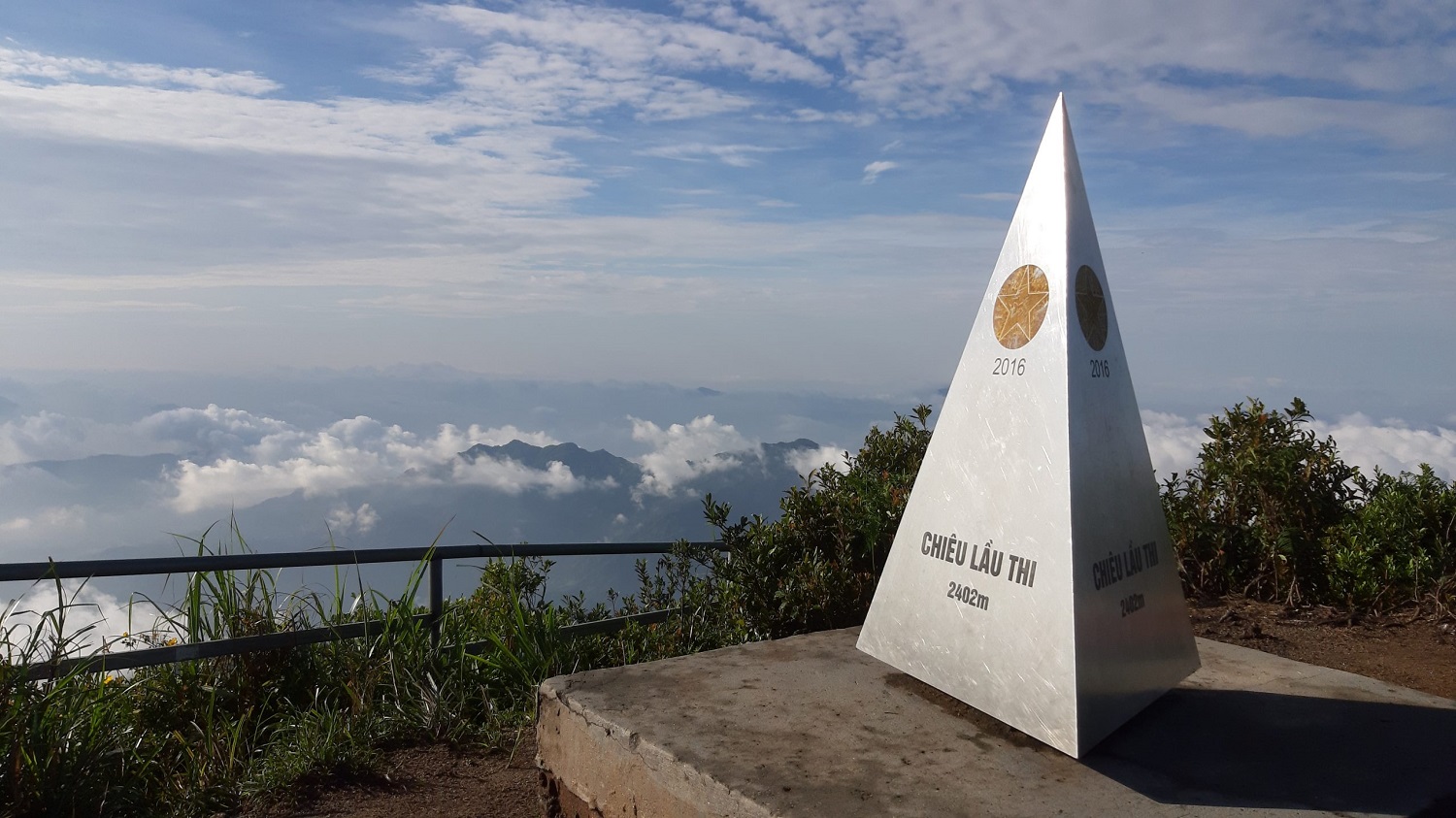
3.2 Exploring Rocky Mountains and Challenging Mountain Passes in Ha Giang
In May, the entire karst plateau dons a lush green coat, full of vitality. This is the ideal time to conquer the region’s distinctive limestone mountains. The rugged, mossy gray rock formations stretch skyward, adorned with wildflowers, creating a landscape both wild and poetic.
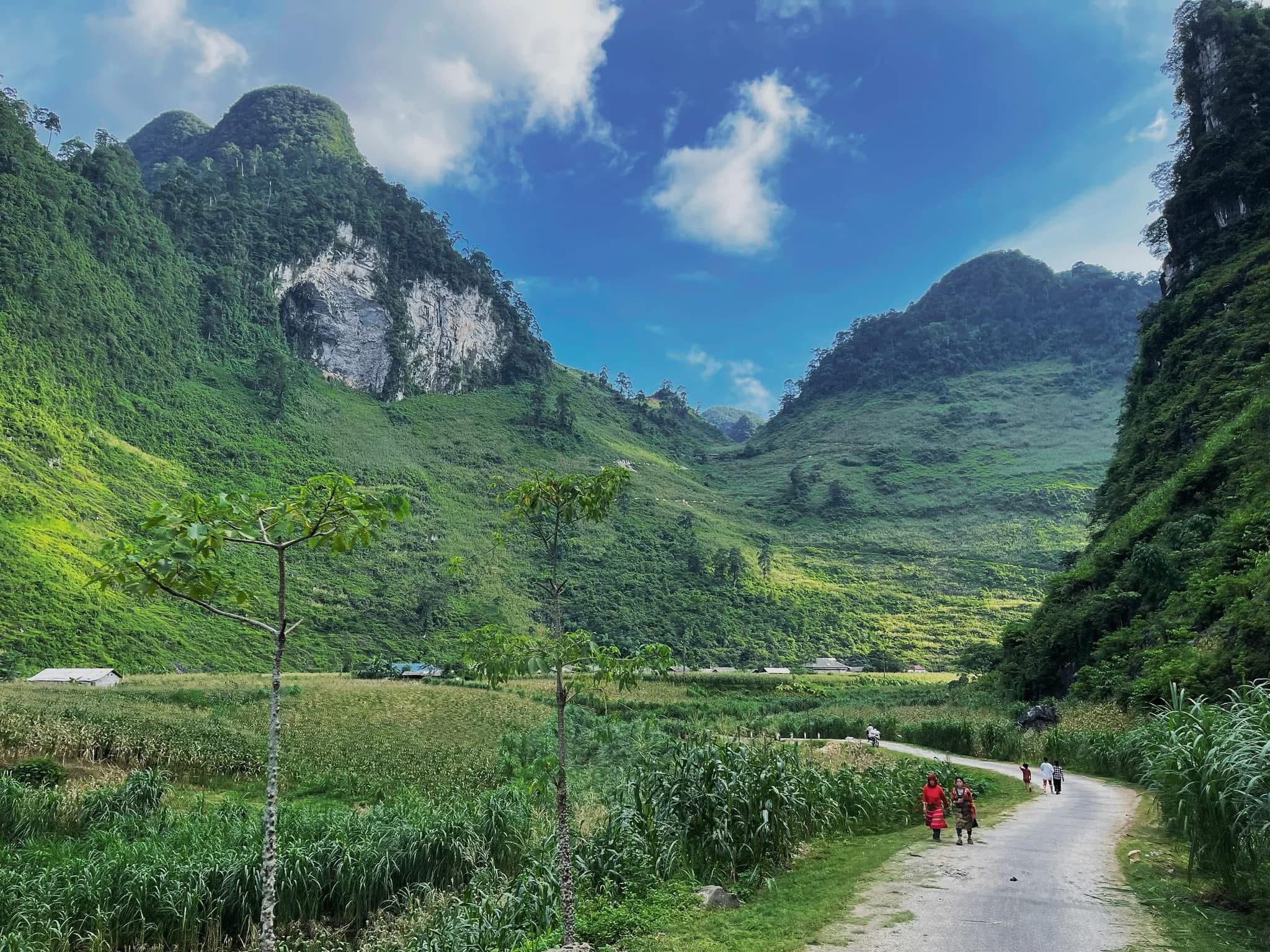
Along your journey, winding mountain passes like Ma Pi Leng, Bac Sum, or Can Ty are challenges you shouldn’t miss. These twisting roads embrace mountain sides and deep valleys, requiring drivers to maintain a firm grip on the wheel. Along the way, the sound of waterfalls filtering through rock crevices creates a natural symphony of the mountains. Each curve reveals a vivid scene, leaving travelers with a spectrum of emotions.
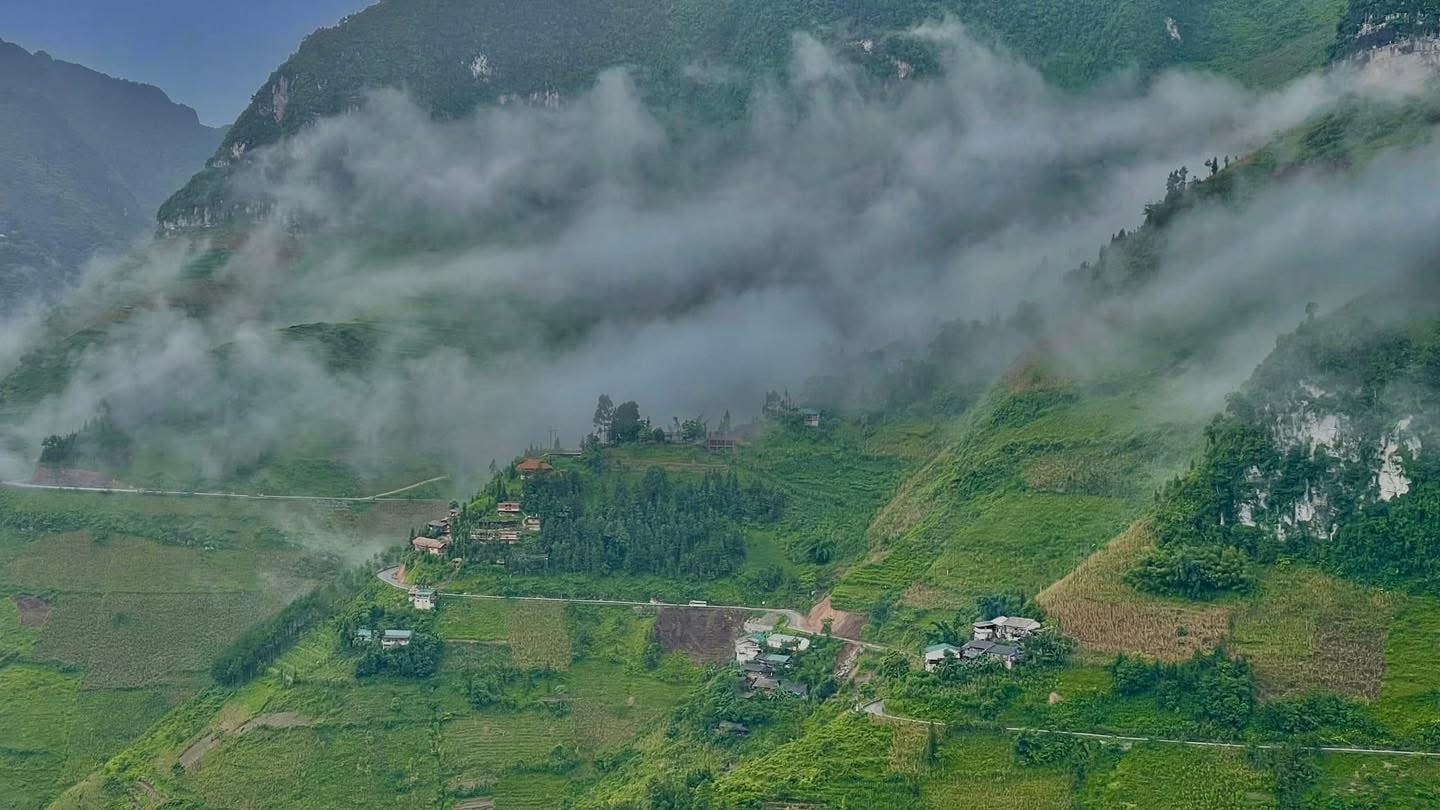
May is also festival season for highland communities. Somewhere along your route, you’ll hear joyful sounds echoing from villages. Local people don vibrant traditional embroidered costumes, performing traditional dances accompanied by khene pipes and drums resonating through the mountains. This is your opportunity to deeply appreciate the unique cultural values of these communities.
3.3 Admiring the Unique Beauty of Terraced Fields During the Water-Filling Season
Located in western Ha Giang, Hoang Su Phi has long been famous for some of Vietnam’s most beautiful terraced fields. Amidst the challenging limestone karst terrain, local people have skillfully cultivated the land, creating winding terraced strips that embrace entire mountainsides.

Each village’s terraced fields have their own distinctive beauty. Ban Su Choong impresses visitors with lush green expanses stretching among ancient stilt houses. Ban Phung is known for its crescent-shaped fields curving along mountain slopes. Reaching Lung Phin, you’ll find terraced layers directly beneath the long-standing rammed earth houses of the Hmong people. Ban Ho is special for its terraced fields extending as far as the eye can see.
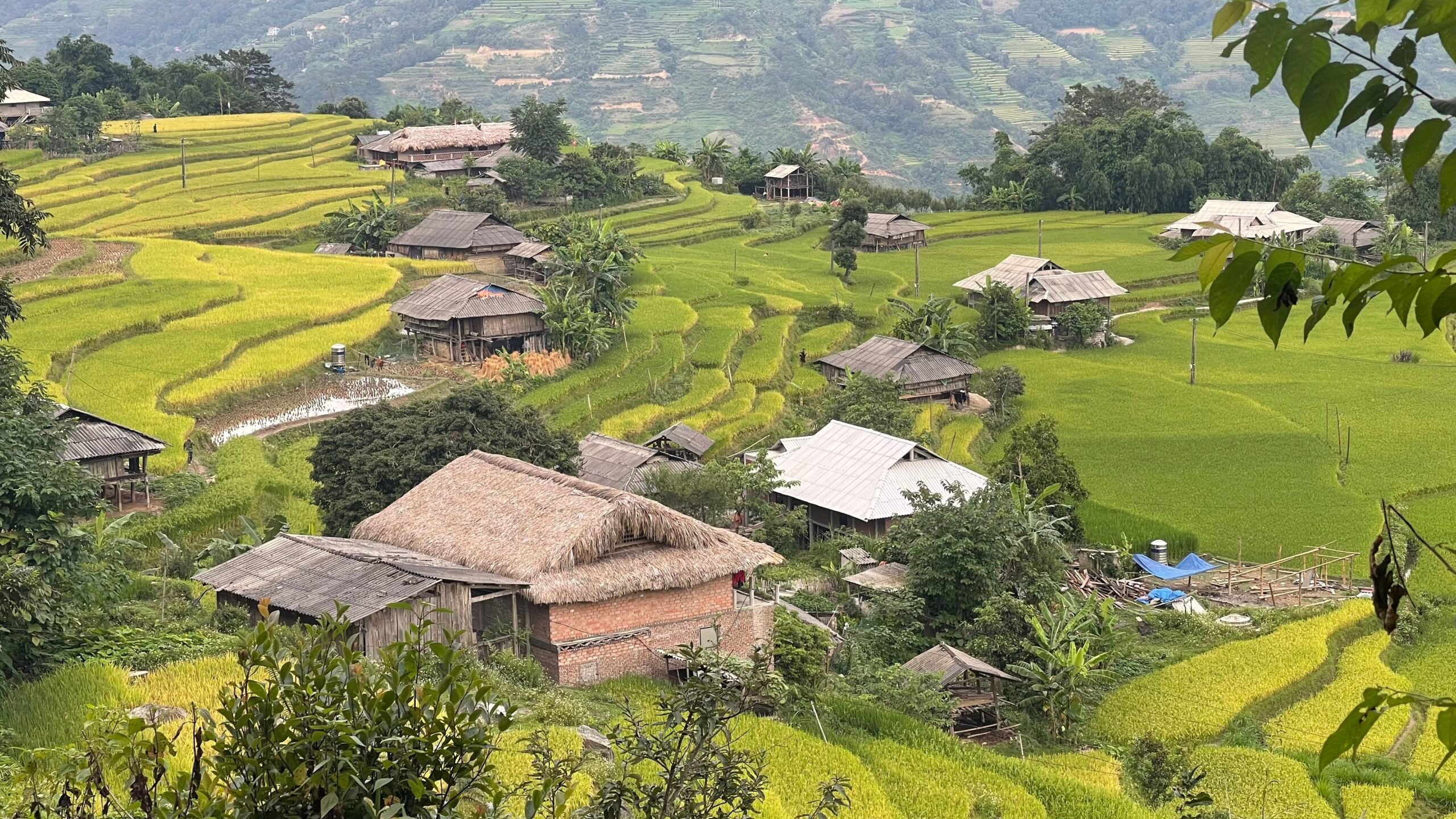
When the first seasonal rains arrive, Hoang Su Phi enters the water-filling season. From May to July, water from streams and rivers is skillfully channeled into each field, covering the rocky terraces and transforming entire mountainsides into giant mirrors reflecting sunlight. The scene becomes a multi-colored painting with tones of brown earth, silvery water, and deep blue sky.
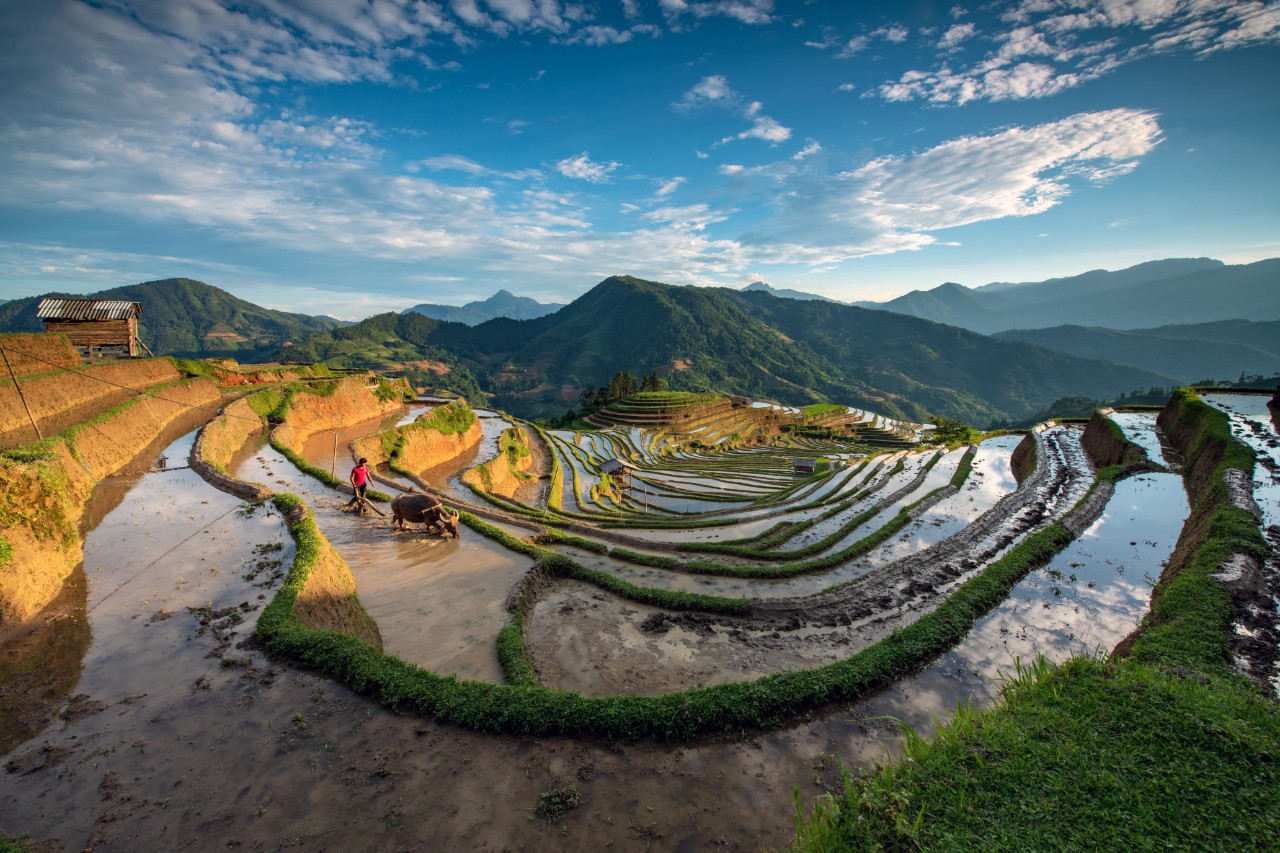
Within this landscape, the image of people diligently planting rice, their laughter echoing across the fields… all creates a vivid portrait of highland life. This is also when many tourists and photographers come to Ha Giang to capture precious moments of the water-filling season.
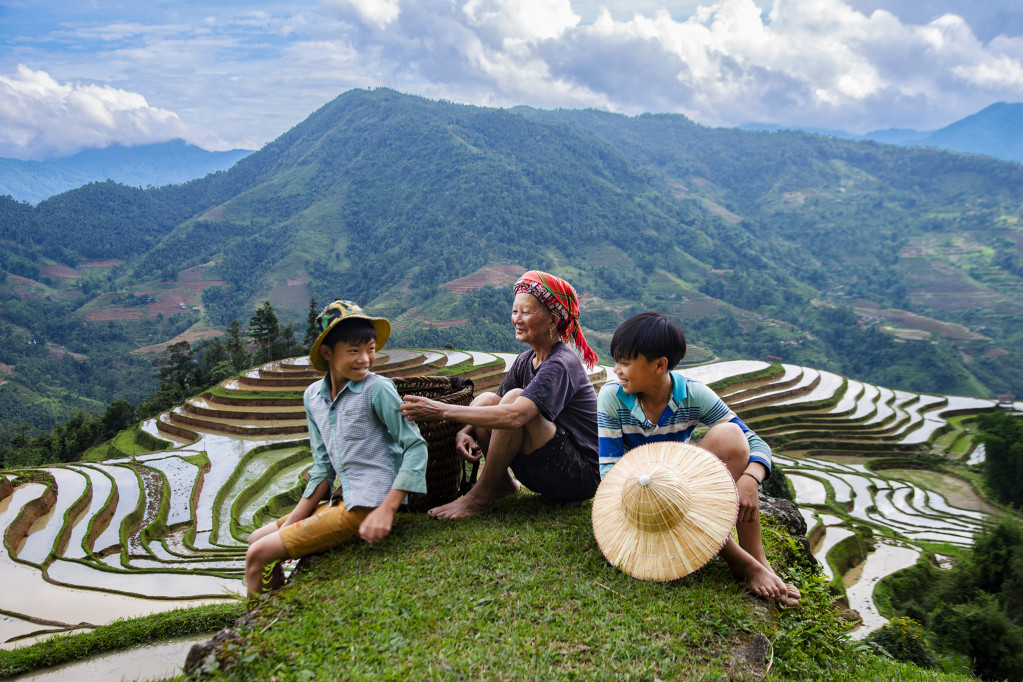
4. Ha Giang’s Specialty Dishes
May is also the ideal time to enjoy highland cuisine in Ha Giang. Your exploration of the karst plateau wouldn’t be complete without trying:
Thang Co
Thang Co is a traditional Hmong dish prepared from various horse organ meats, seasoned with spices like cardamom, galangal, ginger, and corn wine. Its dark color and strong aroma might initially intimidate many people, but once you try it, the rich flavor and aromatic herbs will leave a lasting impression.

Bac Me Bamboo-Tube Rice
Glutinous rice is carefully soaked, selecting only the plumpest grains then washed with crystal-clear spring water. Locals then place the rice in fresh bamboo tubes, seal them with banana leaves, and slowly roast them over hot coals. When the bamboo exterior is charred, breaking it open reveals fragrant, sticky rice infused with the aroma of roasted bamboo. This dish is usually served with sesame salt or grilled meat.
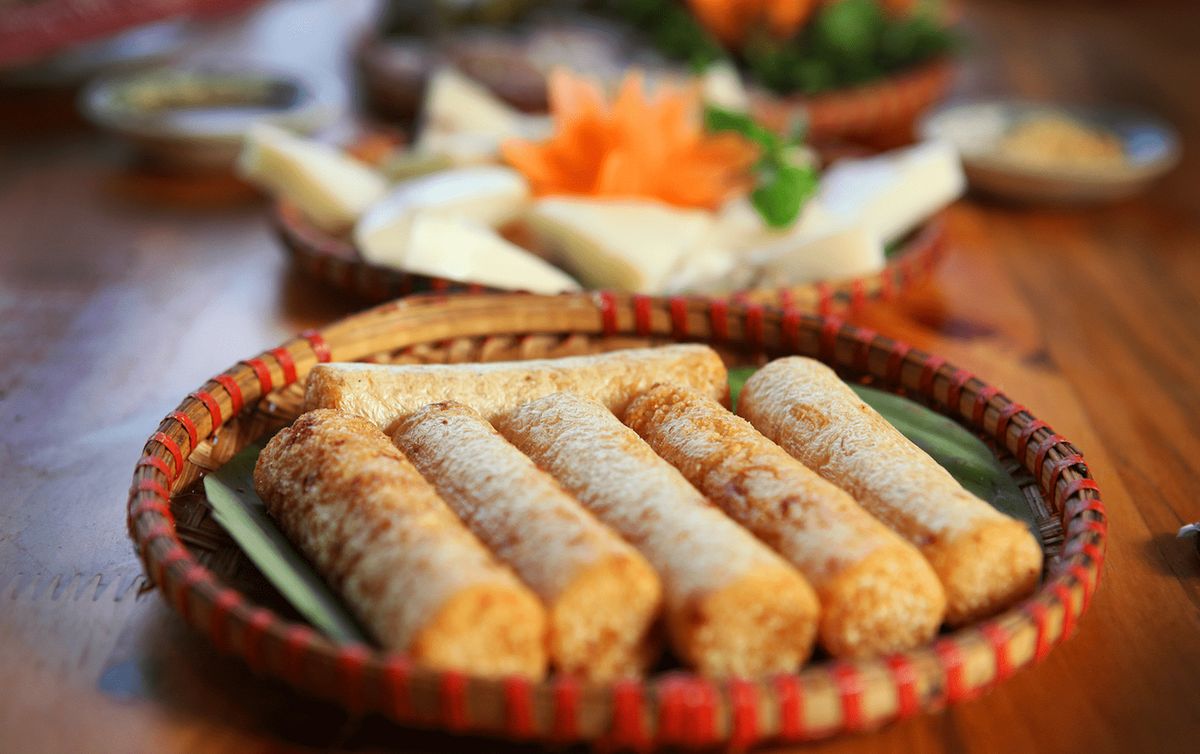
Ha Giang Egg Rice Rolls
Unlike lowland rice rolls, Ha Giang’s version isn’t served with fish sauce but comes with a hot bone broth. The thin, soft rice sheets wrap around golden egg filling, sprinkled with fried shallots and ground pepper. When eating, you’ll feel the rice sheet melting in your mouth, followed by the rich egg flavor blending with the natural sweetness of the broth.
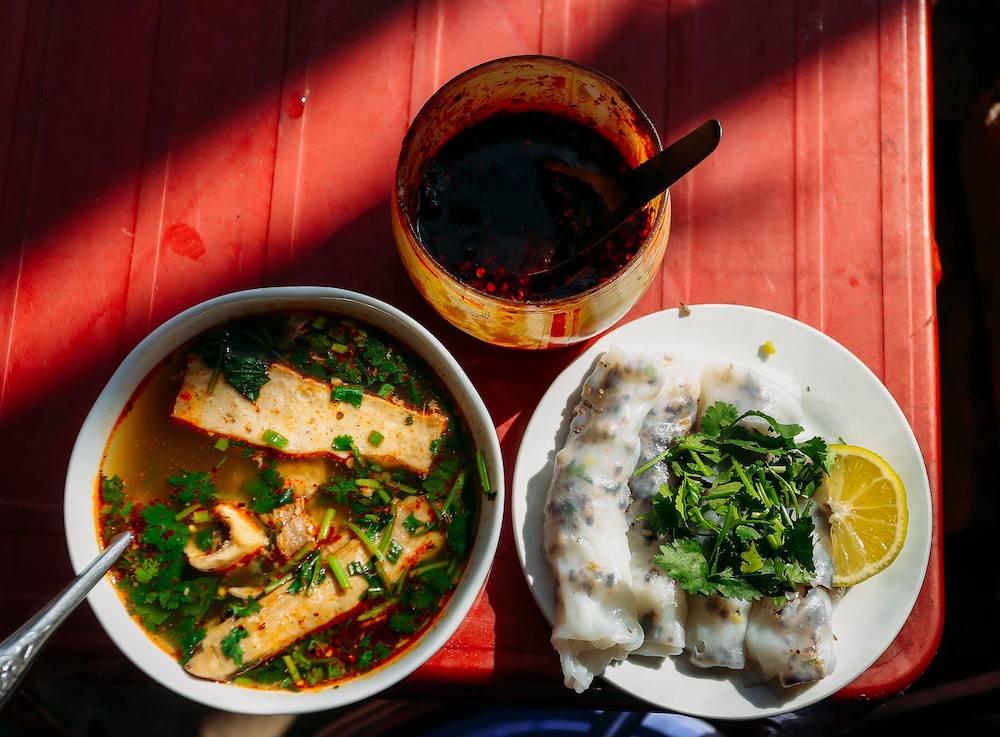
Au Tau Root Porridge
Au Tau root porridge is often eaten by locals on chilly evenings to keep warm. Preparing this dish is quite elaborate. The Au Tau root must have its toxins removed, then simmered with yellow flower glutinous rice and regular rice, mixed with rich bone broth. This dish has the characteristic slight bitterness of Au Tau root, the nutty flavor of rice grains, and the sweet taste from bones. Sprinkling some pepper and green onions makes the flavor even more explosive.
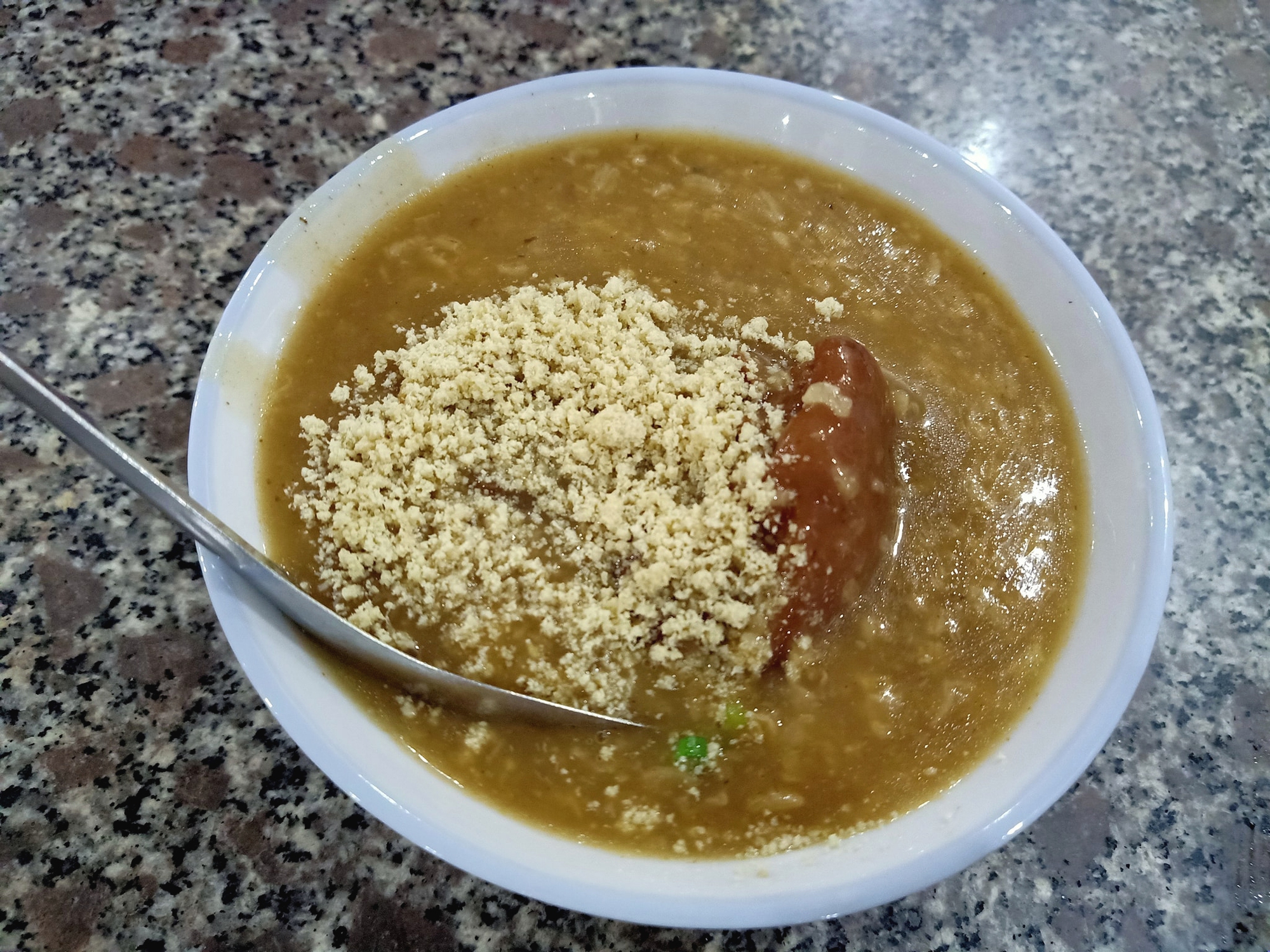
5. Where to Stay in Ha Giang in May
For those who love nature-immersive spaces, homestays nestled among mountains and forests are ideal choices. Staying here, you’ll also have opportunities to chat with locals and learn more about highland ethnic cultures. A night at a homestay costs between 400,000 and 1,000,000 VND per room, suitable for both friend groups or couples seeking authentic experiences.
If you prioritize comfort, hotels in downtown Ha Giang City or Dong Van area are available. Hotel costs range from 500,000 to 2,500,000 VND per night, depending on room type and additional services. Some highly-rated options include:
Panhou Retreat
- Notable for its forest retreat setting, perfect for those seeking tranquility.
- Address: Giang Village, Thong Nguyen Commune, Hoang Su Phi, Ha Giang
Phoenix Hotel Ha Giang
- Convenient location, modern rooms, professional service.
- Address: 92T Nguyen Trai, Nguyen Trai Ward, Ha Giang City
Lagom Su Phi Retreat
- Ideal location for viewing terraced fields and enjoying fresh air.
- Address: Tan Phong Village, Ho Thau Commune, Hoang Su Phi District, Ha Giang
Plum Homestay Dong Van
- Located right on Happiness Road, easy access to the ancient town and nearby attractions.
- Address: Happiness Road, Xom Moi Village, Dong Van Town, Ha Giang
Pao’s Leisure Homestay
- Modern space with local touches, suitable for young travelers who love photo opportunities.
- Address: 366 Ly Tu Trong, Tran Phu Ward, Ha Giang City
6. Exploring Ha Giang with Phieu Travel’s Local Guides
The guides accompanying Phieu Travel’s Ha Giang tours are all locals, born and raised in the Northeast mountains. They know every curve, slope, and even lesser-known trails. Their familiarity with the terrain makes your journey safer, especially when traveling through winding mountain passes or slippery slopes during the rainy season.
Not only knowledgeable about routes, these guides also understand highland life rhythms thanks to their childhood and ongoing connections to the region. They know when terraced fields begin filling with water, the best times for cloud hunting, or which markets are most worth visiting during your journey. From local eateries to village customs, every piece of information they share comes from genuine daily life experience.
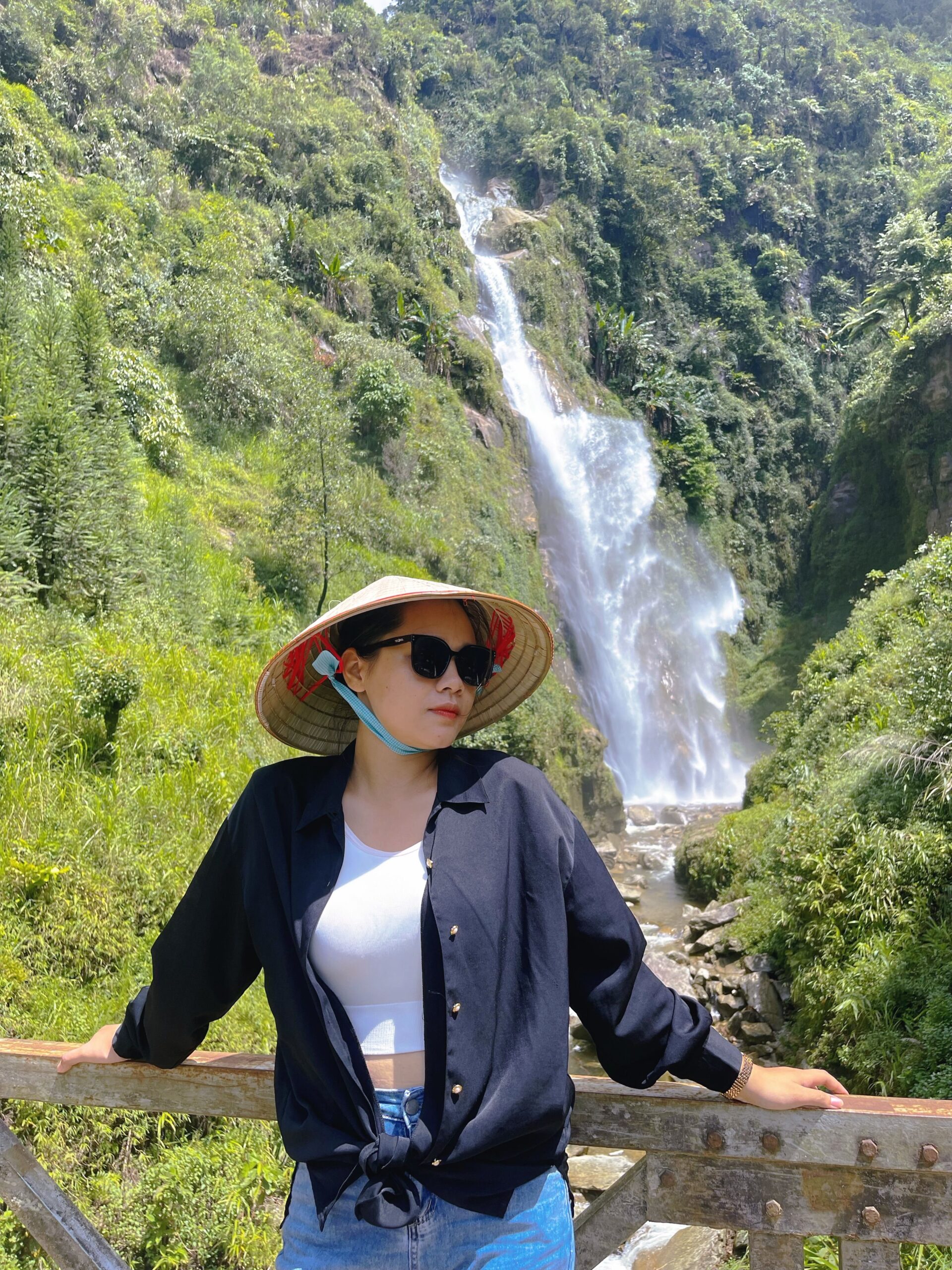
7. Tips for Traveling to Ha Giang
To make your May exploration of Ha Giang more fulfilling, keep these important tips in mind:
Book services early: May marks the beginning of Ha Giang’s peak tourist season. Bus tickets, hotel rooms, or homestays can quickly become fully booked. Planning ahead will give you more control over your itinerary.
Pack appropriate clothing: Daytime usually brings mild sunshine, but sudden rain showers can appear in the evening. When night falls, mountain temperatures can get quite cold. A warm jacket and lightweight raincoat are essential items.
Check your vehicle if riding motorcycles: Ha Giang’s terrain features many mountain passes and sharp turns. Before departure, check your brakes, tires, lights, and always carry complete vehicle documentation.
Bring insect repellent: The humid air and abundant vegetation create ideal conditions for mosquitoes, leeches, and other mountain insects. Don’t forget insect repellent if you want to avoid bites!
Experience local homestays: If you want to better understand Hmong, Dao, or other ethnic lifestyles, spend at least one night at a homestay in their villages.
Prepare small gifts for highland children: A few notebooks, colored pencils, or some candies will be meaningful gifts for the children you meet along the way.
Ha Giang in May isn’t for those in a hurry. It’s a journey for people who want to slow down, fully experience the rhythm of the mountains after the first rains, stand amid water-filled terraced fields, or stop your vehicle beside an empty mountain pass to quietly watch the sea of clouds drift by. This experience becomes even more complete with Phieutravel.com guiding you, accompanying and sharing the most authentic moments along every road you travel.
Read more:
- H’mong People in Ha Giang: Traditions, Life & Travel Tips
- 3 Days 2 Nights Ha Giang Loop tour package from Phieu Travel
- How Far is Ha Giang from Hanoi? A Complete Travel Guide

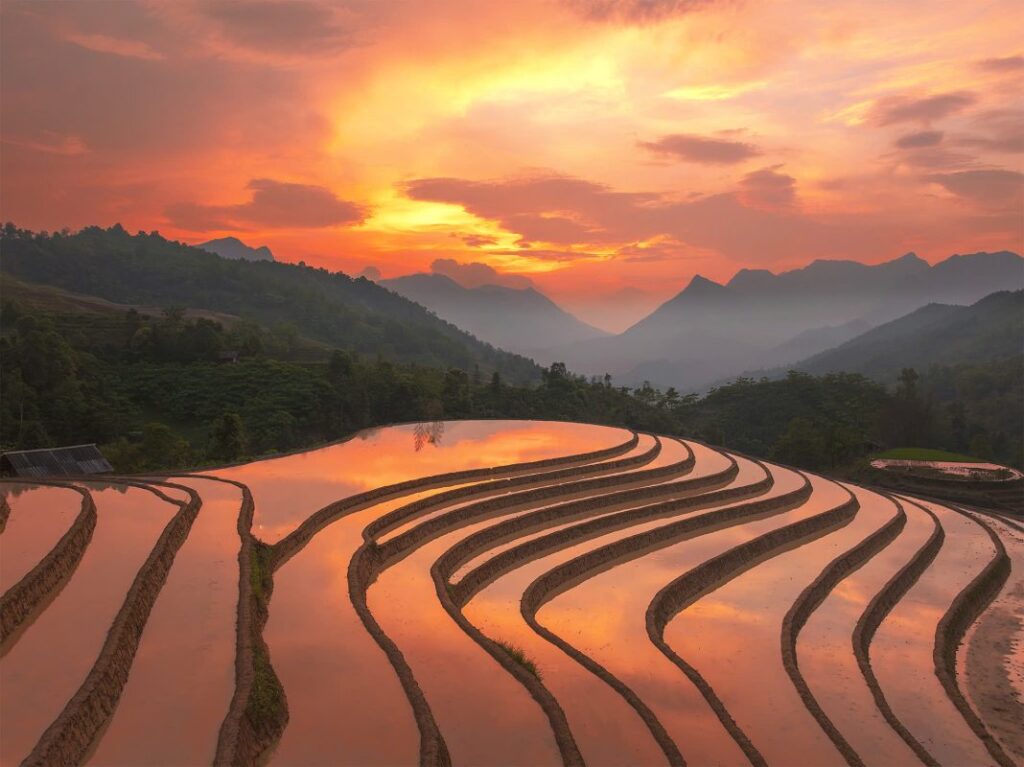
You Might Also Like
Ha Giang Weather in September: Complete Guide for Travelers
Exploring the magnificent Ha Giang Loop in September offers travelers a perfect balance of favorable[...]
Quan Ba Twin Mountains: Ha Giang’s Iconic Fairy Hills and Complete Travel Guide
The mystical Quan Ba Twin Mountains rise from the emerald valleys of Ha Giang like[...]
Vuong family mansion: the architectural marvel and cultural legacy of Ha Giang
Deep in Vietnam’s northern highlands, where mist-shrouded mountains meet terraced rice fields, stands a testament[...]
Ha Giang Loop Safety Tips: How to Ride Securely in Vietnam’s Northern Mountains
The Ha Giang Loop, with its winding mountain roads and breathtaking landscapes, offers one of[...]
The Ultimate Guide to the M-Shaped Curve on Ha Giang Loop
Vietnam’s remote northern province of Ha Giang hides a natural wonder that has captivated adventurous[...]
Most Beautiful Places to Visit in Vietnam: Essential Destinations and Insider Tips
Vietnam captivates travelers with its stunning landscapes, rich cultural heritage, and warm hospitality. From mist-shrouded[...]
Beyond the Beaten Path: Discovering Ha Giang Province in Northeast Vietnam
Ha Giang Province in Northeast Vietnam stands as one of the country’s last frontiers for[...]
Rainy season in Ha Giang: what to expect, when to go, and travel tips
Vietnam’s northern frontier reveals a different face during the rainy season, transforming Ha Giang’s limestone[...]